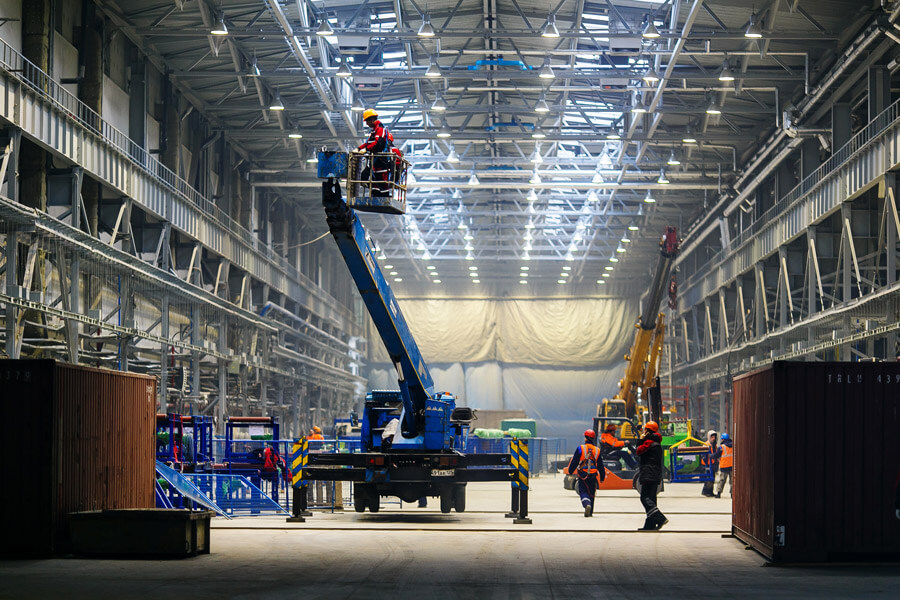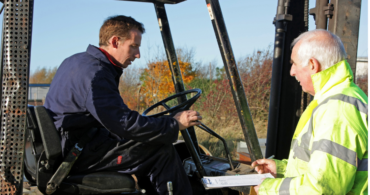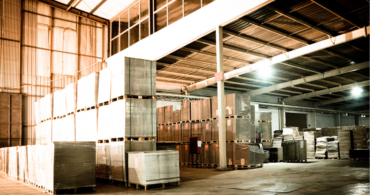There are a lot of big questions and small details to consider when you build a warehouse. As online businesses are taking off, warehouses are becoming an increasingly popular form of real estate. Whether you’re trying to streamline your existing business, expand it, or in need of a renovation, let us help you break down the average warehouse construction cost so you can plan your construction accordingly.
How Much Does It Cost to Build a Warehouse?
The final cost to build a warehouse depends on a variety of factors, the biggest of which is its size. However, there may be some items on this list that surprise you, so let’s take a closer look.
Factors Affecting Warehouse Construction Cost
From the materials you use to the experts you consult, think about what fits your needs:
- Size of warehouse: How many square feet will be enough to store your products? Naturally, it will depend on the materials you use. For example, the warehouse construction cost per square foot runs between $7.61 and $10.25 for steel warehouses. In addition to materials used, the warehouse cost per square foot also depends on the location and the utilities required.
- Location: The city, state, and zip codes you choose to build in will have their own costs for land and taxes. Additionally, the price of your warehouse per square foot depends on your location. For example, the rate is $212.50 per square foot in San Francisco, while the average ranges from $7-9 per square foot in Austin, TX.
- Type of warehouse: Are you designing a large warehouse with several loading docks or a small one with just a garage? How many windows, doors, bathrooms, and elevators are needed? All of these factors will impact your warehouse construction cost, so be sure to have a thorough plan ready when assessing your budget.
- Types of equipment: Keep in mind the costs of computers and other specialized equipment you’ll need. When it comes to forklifts, be sure to factor in the cost of their batteries, accessories, power source, and maintenance. A faulty forklift can set back several days of work, creating a heavy blow to your bottom line. To keep yours in tip-top shape, it helps to have a service technician and spare parts readily accessible.
- The type of experts: You will likely need an engineer, an architect, and a lawyer in order to complete construction. Any specialist help will factor into your warehouse construction cost.
- Though the average is less than $1 per square foot within standard-sized warehouses, electricity is the highest utility cost.
- The rates of the necessary additional costs may vary: insurance, taxes, permits, type of utilities (solar power, natural gas, etc.), and necessary construction to comply with health and fire safety regulations.
Stages Of Building Warehouses
First, decide on the two biggest aspects:
- The size: Do you need a large, multilevel distribution center with all the corresponding fire safety standards met? Or more of a small storage unit with an attached office space? How tall do you envision it? In other words, how high do you intend to stack merchandise, or how many floors would get the job done? Pallet racking can be as tall as 40 feet, and possibly even higher if necessary.
- The location: Narrow down your location and remember to do your research on the cost of building warehouses in your potential zip codes. Convenience is key: is it important that your warehouse is close to your headquarters, the highway, or both?
Now you have your major decisions made, it’s time to execute the specific details:
- Design it: Choose the construction material. Make sure you have the equipment and the resources to keep your equipment in good shape. Figure out the maximum number of pallets or units you’d need to store, then design your warehouse to be 10% larger to accommodate busy periods.
- Prepare the land: Make sure you’re building on level land. Lay asphalt or gravel for a parking lot and delivery area. Hire plumbers and electricians to install their tubes and wires in the surrounding ground.
- Build the framework: This includes beams, walls, roof, insulation, windows, and doors.
- Install interior systems: Establish air conditioning and/or heating, sprinklers, plumbing, electric outlets, Internet, etc.
How to Save on Warehouse Building Cost
Naturally, the cost to build a warehouse is daunting. While this will inevitably be a massive financial investment, there are steps you can take to minimize your warehouse construction costs.
- Schedule preventative forklift maintenance. Having routine checkups on this crucial equipment can fix existing problems quickly and catch big problems before they happen, like needing to replace batteries before they grind your work to a halt. Get the most out of your batteries and chargers by having them checked regularly by an experienced technician to protect your investment. Plus, a problem with your forklift could result in injuries, so protect your greatest asset — your employees — with regular preventative maintenance.
- Build your warehouse in a low-cost area for land development and taxes, such as outside Southeastern cities like Dallas or Austin, TX. Do thorough research and check out any local fees associated with building a warehouse.
- Rent out your warehouse. We’re in the middle of a warehouse boom. The first quarter of 2021 saw a 78% increase in warehouse construction from the first quarter of 2020. If you’re building to rent out, you will have the market for it as industrial warehouses have been performing well and are projected to continue doing so.
- Buy used equipment. Buying gently-used second-hand equipment can significantly cut down on costs. Used forklifts, for example, may be sufficient for your warehouse needs. However, be sure to have any used equipment checked by a professional.
- Increasing the height of the warehouse maximizes your square footage, which reduces the warehouse construction cost. Plus, it reduces the time it takes to transport the merchandise.
Warehouse Construction Costs to Consider
Wherever you decide to build, there are several types of costs for building warehouses. Prices can be broken down into the following categories:
- Long-term costs of owning the warehouse may include insurance, taxes, property management, utilities, environmental maintenance, and other expenditures.
- Hard and Soft Costs
- Hard costs refer to the tangible components of a warehouse, such as the land itself, landscaping, labor, safety requirements, and construction materials and equipment.
- Soft costs include paying for architects, engineers, lawyers, designers, permits, insurance, taxes, and movable equipment, like forklifts.
- Three different types of commercial real estate financing may be involved in constructing your warehouse:
- Short-term construction loan may be needed if you’re working with more than one site.
- Bridge financing would help pay the construction loan.
- Permanent takeout financing would go into effect after construction ends.
The Bottom Line
Warehouse construction can be a daunting task but a practical investment. When you break down the warehouse construction cost and identify where you can cut costs, it’s not as overwhelming as you may have initially thought. Part of running an efficient and successful warehouse is having well-running equipment. All warehouses need forklifts of some kind, and Texas Motive Solutions can help with all your forklift service questions — from repairing batteries to refurbishing chargers to helping you get cost-effective, quality service. You can also purchase a brand new forklift battery. Schedule a free forklift fleet performance analysis today.


